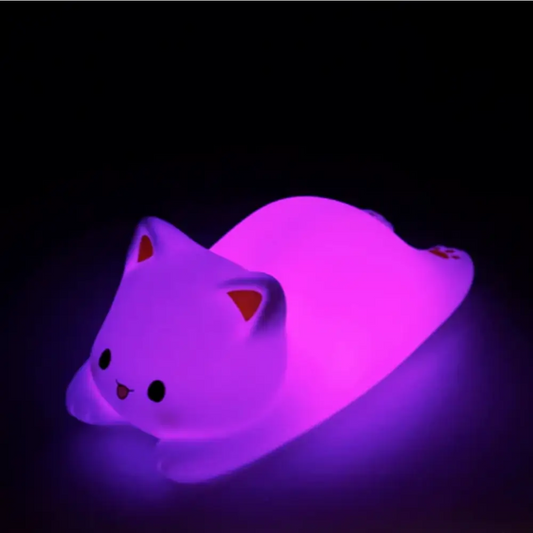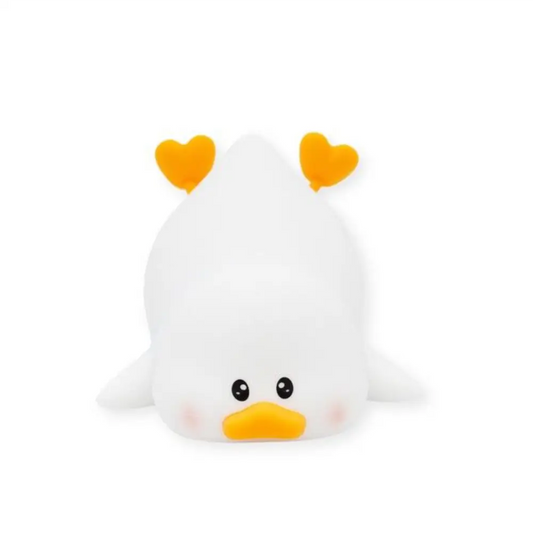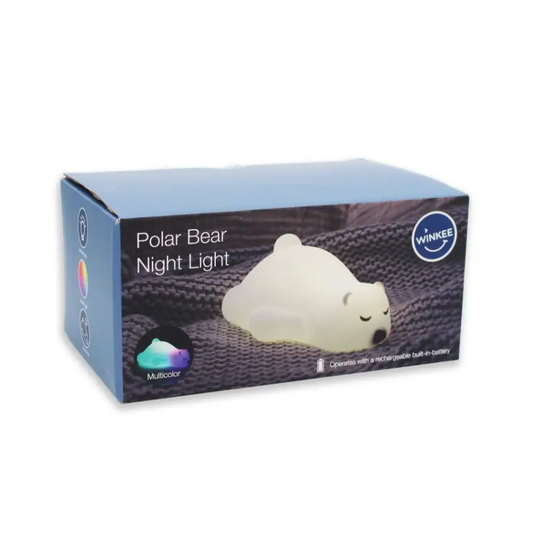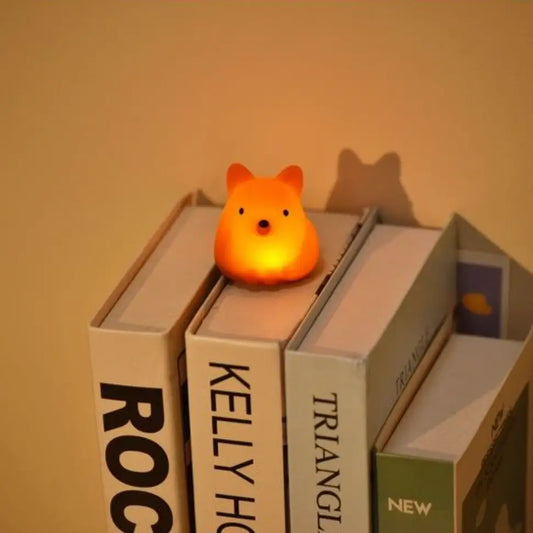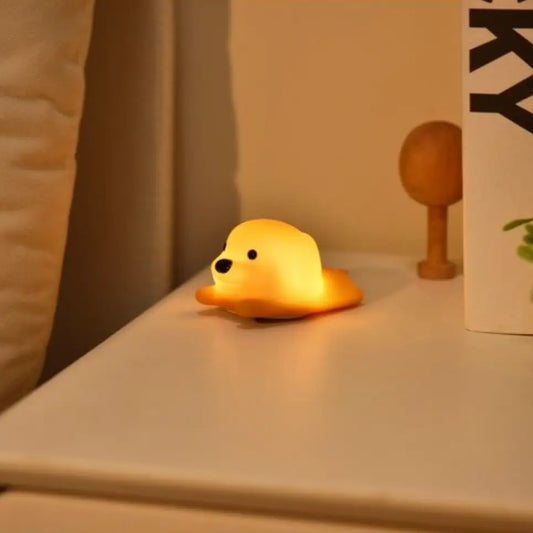Baby night light: Soft light and soothing music for peaceful sleep
A baby nightlight is more than just a decorative object; it's an ideal solution for soothing your baby and helping them fall asleep. This article explores the benefits of a nightlight, whether it's a lamp that emits a soft glow or a musical nightlight that accompanies your baby throughout the night.
Using a nightlight in your child's room creates a soothing and reassuring atmosphere, ideal for reducing fear of the dark and night terrors. Thanks to its various features, such as warm light or relaxing music, the nightlight helps both to lull your baby to sleep and to ease nighttime awakenings.
Why a nightlight has become a baby essential
Reassuring and providing security: an innate need of toddlers
The early years are marked by a child's sensory awakening, and fear of the dark is a common phenomenon. A soothing nightlight , whether in the form of a plush toy, a turtle, or an elephant, plays a key role in creating a warm atmosphere, fostering a reassuring environment.
Nightlights , especially those emitting a soft or warm glow, provide a sense of security and comfort. Their gentle lighting helps babies fall asleep more easily, while also creating a connection between them and their environment. A nightlight is therefore essential for soothing babies, reducing crying, and ensuring restful sleep.
Helping parents on a daily basis
A bedside lamp, such as a silicone or USB rechargeable nightlight , is extremely practical for parents. It provides discreet lighting during nighttime care without fully waking the baby.
Whether it's changing a diaper or feeding your baby, a soothing nightlight with a soft glow is a valuable ally for parents. By adding a nightlight to your cart, you ensure comfort and security throughout the night, helping to establish a stable and reassuring bedtime routine.
How to choose the right nightlight for your baby according to their age and needs
The different types of nightlights
There are several types of baby nightlights , each suited to specific needs. For example, nightlights that project images onto the ceiling, such as sky projector nightlights or projection nightlights, provide a soothing visual effect that helps babies fall asleep.
You can opt for a portable nightlight if you travel often, or a stylish wooden nightlight to decorate your baby's room while also meeting their sleep needs. Cute and practical plush nightlights offer the advantage of being both cuddly toys and sources of soft light. LED nightlights, with their low energy consumption and long lifespan, are also an excellent choice to ensure your baby's safety and comfort.
The essential criteria for a good choice
Choosing a nightlight depends on several criteria, including safety and functionality. A USB rechargeable nightlight is ideal for avoiding the use of batteries and making recharging easier.
The intensity of the light is also crucial: it's recommended to choose a nightlight with a soft, warm glow to avoid disrupting the production of melatonin, the sleep hormone. It's also important to choose a personalized nightlight that can match the baby's room decor, whether it's a pink nightlight or a unicorn nightlight .
Where should I place the nightlight in the bedroom?
To ensure maximum comfort and effectiveness, the night light should be placed at a reasonable distance from the baby's bed, preferably on a shelf or dresser, where the baby cannot reach it.
The ambient lighting should be directed so as not to obstruct the baby's direct vision, while still creating a comforting atmosphere in the room. A nightlight with a soft, warm glow helps maintain darkness around the crib while providing a visual cue. By strategically placing the nightlight, you contribute to the child's safety while maintaining a soothing and pleasant ambiance.
Nightlight, sleep and learning the day/night rhythm
The role of light in the development of the circadian rhythm
Light has a major impact on the development of a baby's circadian rhythm, which is essential for regulating sleep. A nightlight emitting natural or warm light helps the baby adapt to their environment, reinforcing the sleep-wake cycle. This helps prevent sleep disturbances caused by exposure to overly bright lights.
Rechargeable LED nightlights are particularly suitable for extended nighttime use, as they do not produce blue light, which can disrupt melatonin production. By choosing a nightlight , you create an environment conducive to falling asleep.
Associate the nightlight with a bedtime ritual
A nightlight can be incorporated into a bedtime routine that helps your baby fall asleep. Combine the nightlight's soft glow with a lullaby or relaxing music played by a musical nightlight to soothe your baby before they drift off to sleep. This routine helps your baby understand that night has arrived and it's time to rest.
For example, a nightlight with white noise or a musical nightlight with a lullaby creates a calming atmosphere that prepares the baby for sleep. Parents can also opt for a touch-sensitive nightlight , which the baby can touch to activate the light, to strengthen bonding and provide a sense of security during the transition to sleep.
When to turn off the nightlight?
There's no strict rule for stopping the use of a nightlight. However, as your baby gets older and more independent, they may start to get used to the dark. You can then gradually dim the nightlight.
Start with an LED nightlight with adjustable brightness, so you can adapt the light to your baby's needs as they grow. At this stage, a wall-mounted nightlight can be a practical option to continue providing soft lighting while allowing your baby to gradually become accustomed to the dimness.
The different models of nightlights: between technology and poetry
Projector and musical nightlights
Projector nightlights , such as those displaying images of dinosaurs or whales on the ceiling, create a magical and soothing atmosphere. These models are particularly useful for younger children, as the projection of a starry sky or soft shapes helps them concentrate and relax.
Combined with relaxing music or white noise, they help babies fall asleep in a calm and peaceful environment. The soft light and sounds help soothe night terrors and reassure babies during sleep.
Connected nightlights: sleep 2.0
Smart nightlights offer advanced features to simplify managing your baby's sleep. Some musical nightlights can be controlled via an app, allowing you to adjust the light intensity, color, and even program lullabies or nature sounds.
This connectivity allows parents to adapt to their baby's needs while ensuring optimal sleep. These USB rechargeable nightlights are also convenient because they don't require batteries, making them economical and environmentally friendly in the long run.
Decorative and designer nightlights
Decorative nightlights become true style objects in a baby's room. Whether you choose a wooden nightlight, a soft-light nightlight, or a personalized one, they blend perfectly into the room's ambiance.
For example, a nightlight shaped like an animal, such as a rabbit or a cat, will add a cute and reassuring touch. These designer nightlights not only illuminate the room but also contribute to the baby's nursery decor, while providing a practical and soothing function.
The nightlight as a sensory and educational mediator
Stimulate the senses without overloading them
A nightlight is not just a source of light; it also becomes an essential sensory tool in a baby's development. A nightlight that emits a warm, soft light, combined with gentle sounds or projected shapes, stimulates sight, hearing, and sometimes touch.
By creating a gentle sensory environment, the nightlight helps baby explore their world without being overstimulated. This contributes to peaceful sleep and an optimal relaxation experience.
The nightlight as a tool for emotional education
Some nightlights help babies learn to identify their emotions through colors. For example, a nightlight with color-changing lights that transition from blue to pink or green can be used to signal quiet or playtime. This helps develop a child's emotional intelligence from a very young age. By combining light and music, the nightlight becomes an educational tool that supports babies in their early emotional development.
The nightlight and the parent-child relationship
Turning on the nightlight in the baby's room becomes a symbolic gesture from the parent, a way to show love and offer security and comfort. This intimate moment, shared between parent and child, creates a lasting emotional bond . The nightlight then becomes much more than just a light source; it becomes an integral part of the child's daily life and development.
Light as a language of love and serenity
A baby nightlight is an essential item in the daily lives of new parents. It provides baby with a comforting light and a soothing atmosphere, while also contributing to their sensory and emotional development. It becomes a true ally in reassuring baby and helping them fall asleep more easily. By choosing the right nightlight for your baby's needs, you help create an optimal and calming sleep environment.








